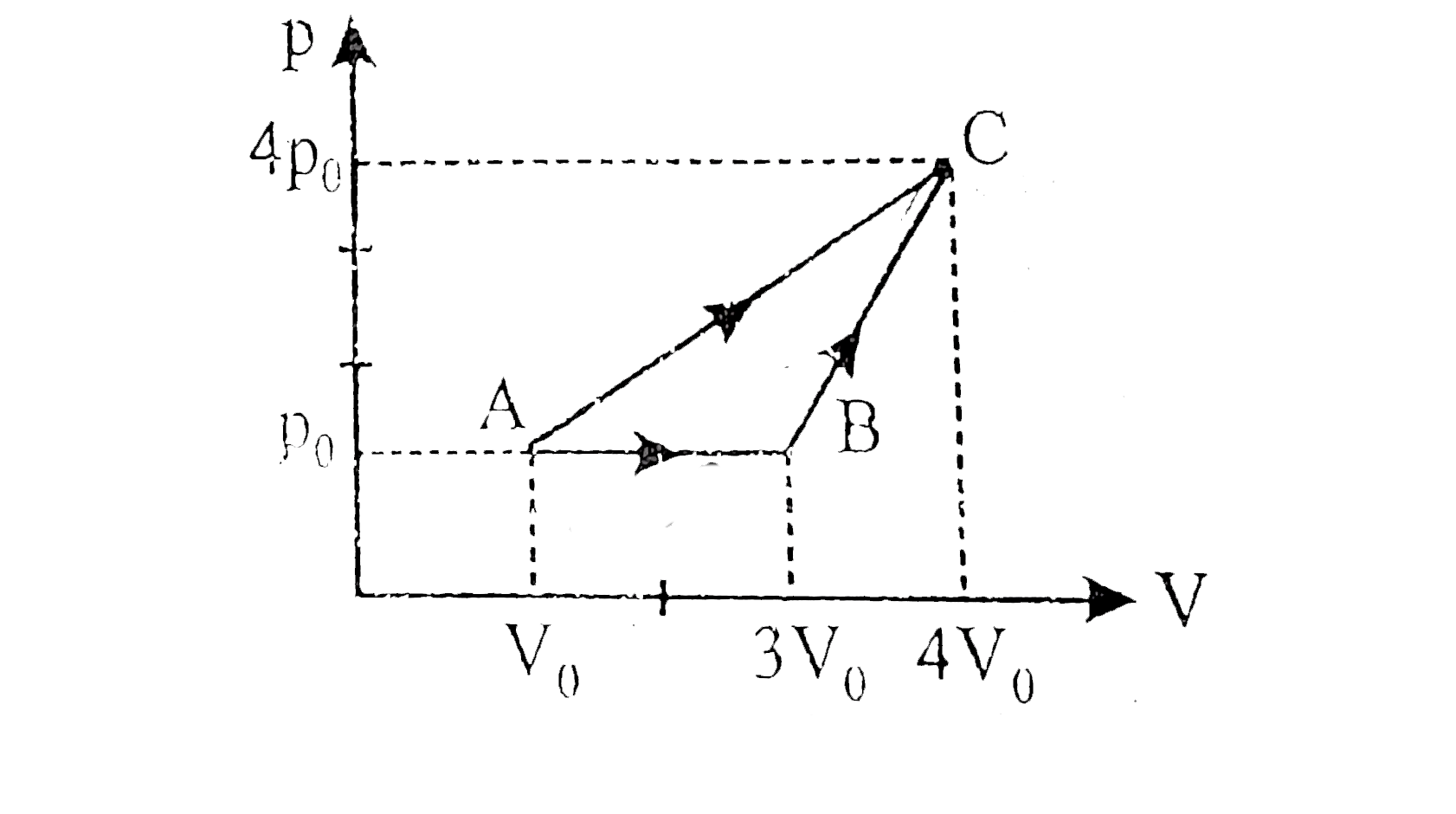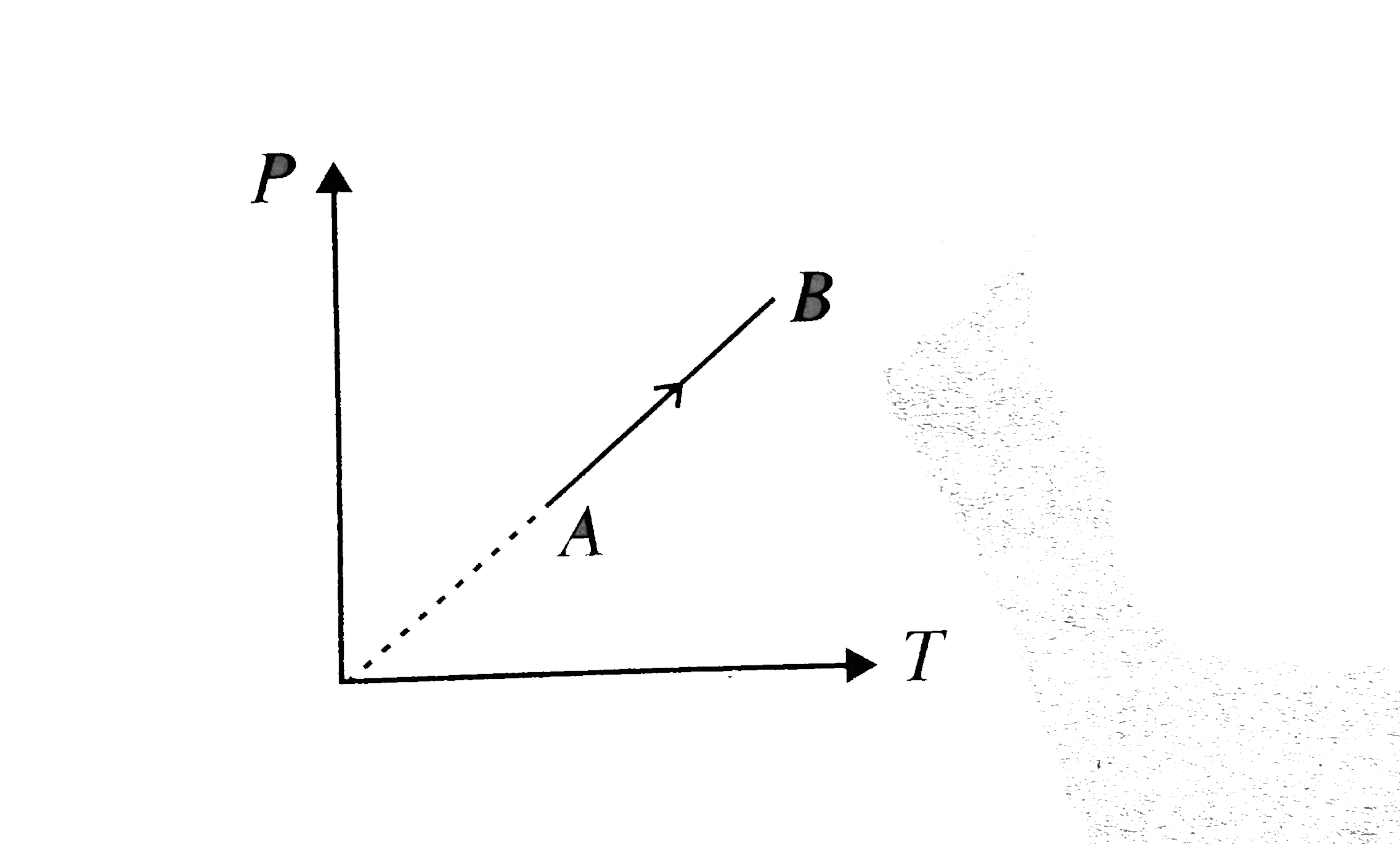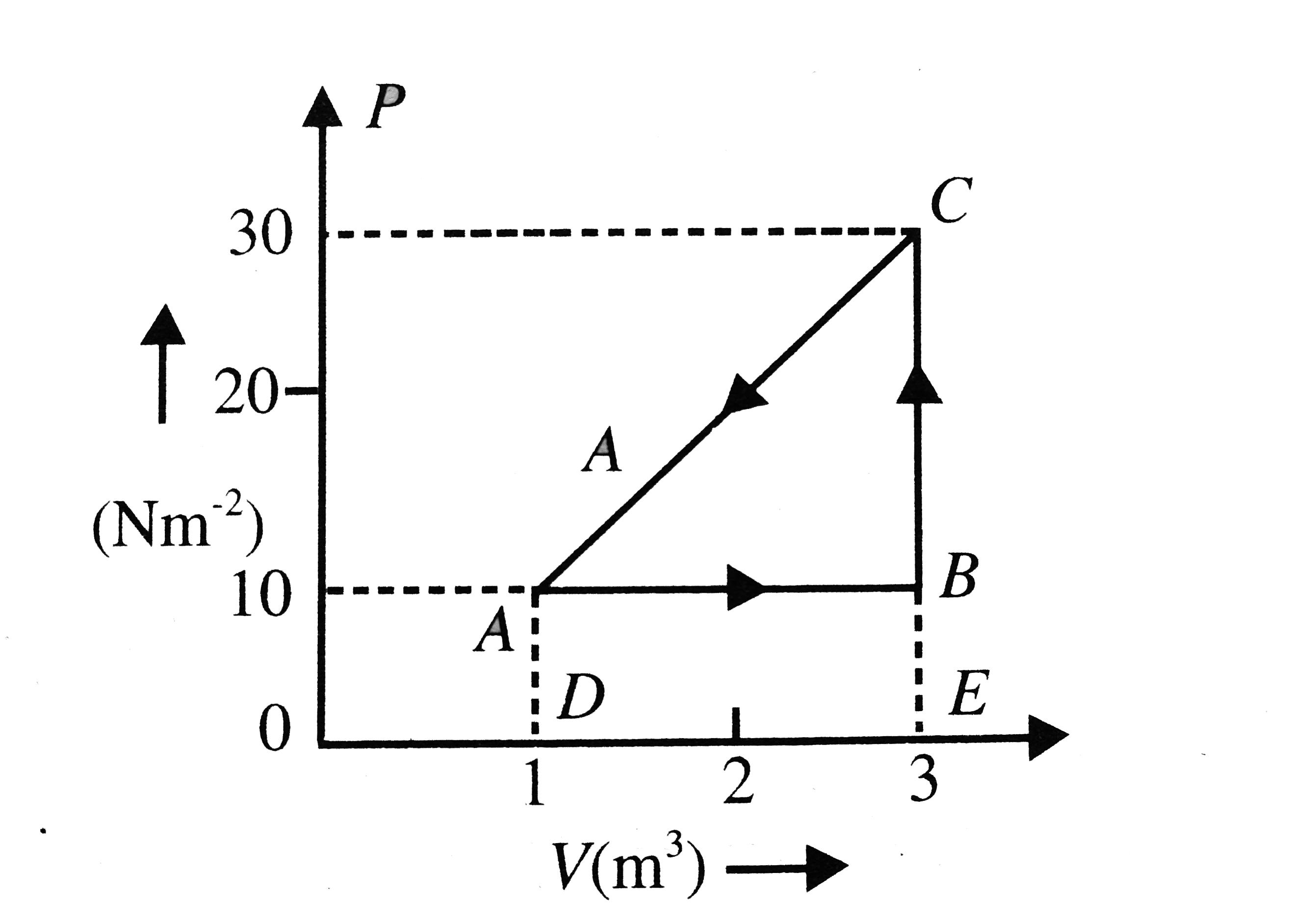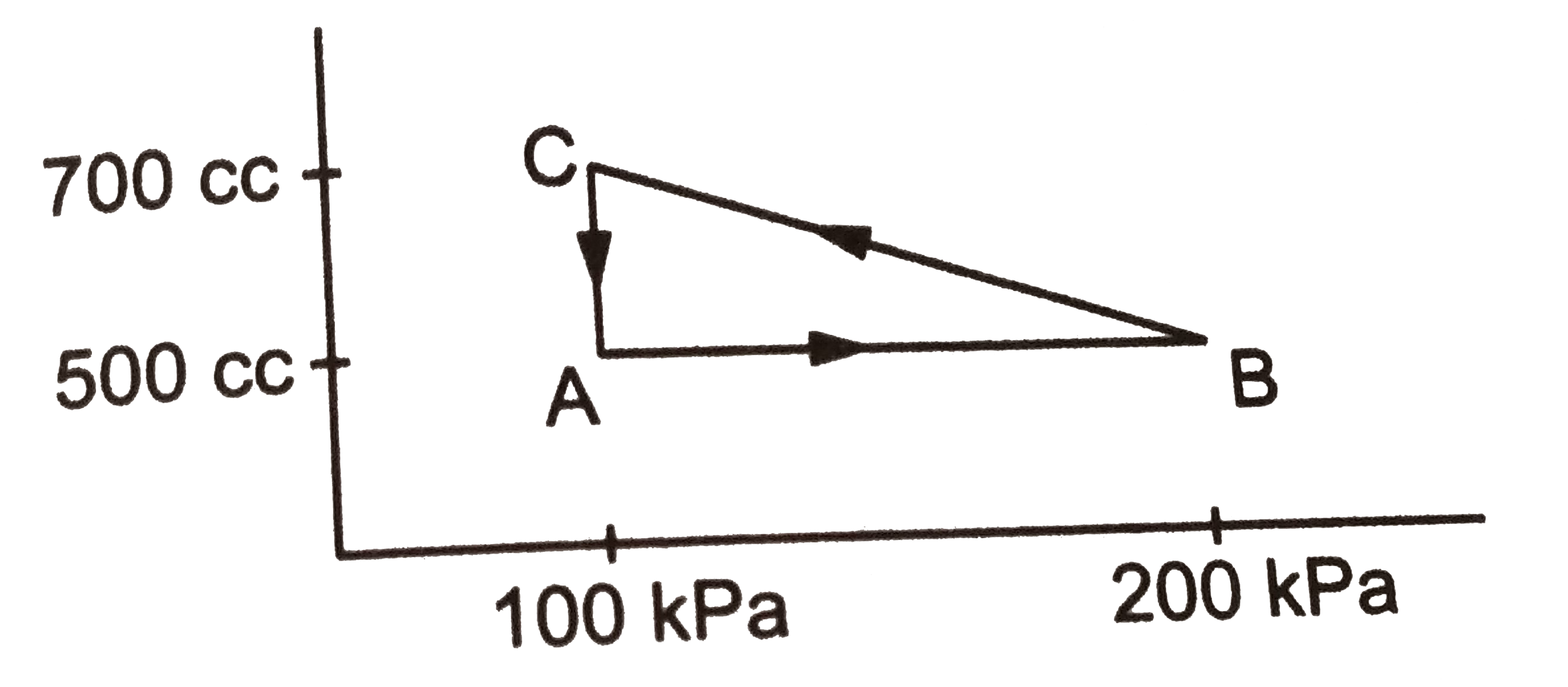
A certain quantity of ideal gas takes up 56J of heat in the process AB and 360 J in the process AC. What is the number of degrees of freedom of the gas.
ΔQAB=nCpΔT=γγ−1nRΔT
=γγ−1[3P0V0−P0V0]=2PV0×γγ−1
ΔQAC=ΔU+Δw
=nRγ−1ΔT+12×3V0[P0+4P0]
=[16P0V0−P0V0]γ−1+15P0V02
56=2P0V0×γγ−1 360=15P0V0[γ+12(γ−1)]
36056=154(γ+1)γ
12γ=7γ+7
γ=75=1+2f⇒f=5
Similar Questions
Knowledge Check
A gas has molar heat capacity C=37.55Jmole−1K−1, in the process PT = constant, find the number of degree of freedom of the molecules of the gas.
A6B3C1D5
During the process AB of an ideal gas

View SolutionIf γ be the ratio of specific heats (Cp&Cv) for a perfect gas. Find the number of degrees of freedom of a molecules of the gas?
View SolutionIf heat is supplied to an ideal gas in an isothermal process.
View SolutionAn ideal gas is taken round a cyclic thermodynamic process ABCA as shown if Fig. If the internal energy of the gas at point A is assumed zero while at B it is 50 J. The heat absorbed by the gas in the process BC is 90 J.
(a) What is the internal energy og the gas at point C ?
(b) How much heat energy is absorbed by the gas in the process AB?
(c ) Find the heat energy rejected or absorbed by the gas in the process CA.
(d) What is the net work done by the gas in the complete cycle ABCA ?

View SolutionFor an ideal monoatomic gas during any process T=kV, find out the molar heat capacity of the gas during the process. (Assume vibrational degree of freedom to be active)
View Solution
A sample of an ideal gas is taken through the cyclic process abca and shown in the figure. The change in the internal energy of the gas along the path ca is −180J. The gas absorbs 250J of heat along the path ab and 60 J along the path bc. the work done by the gas along the path abc is:
View SolutionA gas is taken through a cyclic process ABCA as shown in, if 2.4 cal of heat is given in the process, what is the value of J ?

View Solution
